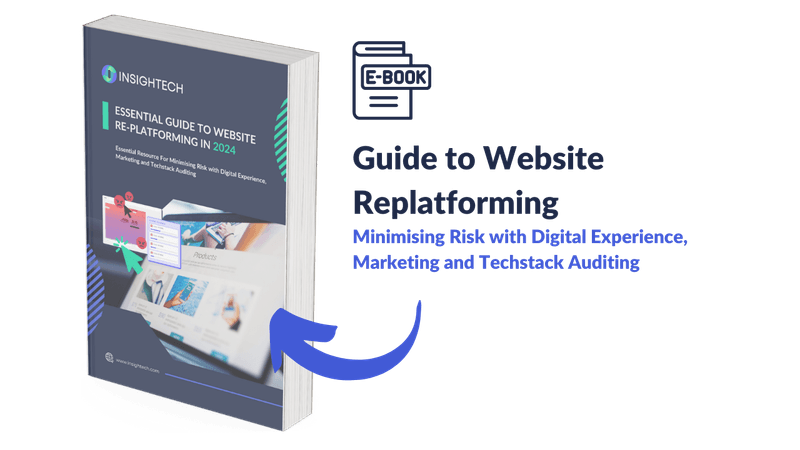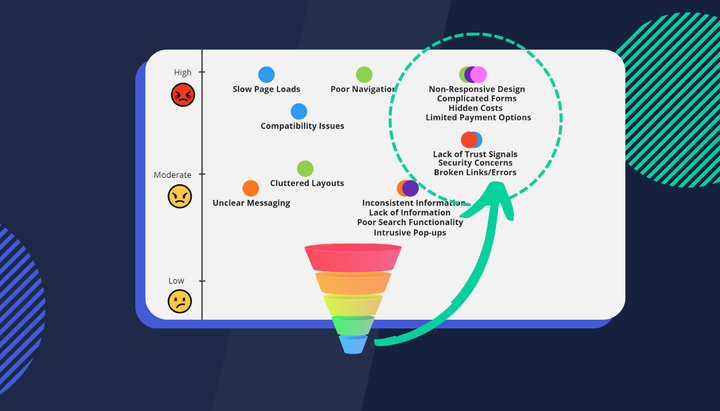8 Signs Your eCommerce Site Needs Replatforming
Recognising these signs early can save your business from lost sales, poor customer experiences, and operational headaches.

Recognising the signs that it's time for replatforming is crucial for maintaining your edge. Here are the top indicators that your eCommerce site might be due for an upgrade.
1. Your Site Struggles with Traffic Spikes
If your website buckles under the pressure of high traffic volumes, especially during peak sales periods, it's a clear sign that your current platform lacks the necessary scalability. Downtime or slow loading times can significantly impact sales and customer satisfaction.
2. Poor Mobile Experience
With more consumers than ever shopping on mobile devices, a seamless mobile experience is non-negotiable. If your site isn't mobile-friendly or if the user experience on smartphones and tablets leaves much to be desired, it's time to consider a platform that prioritises mobile optimisation.
3. Limited Integration Capabilities
As your business grows, you'll likely need to integrate with a variety of third-party services, from payment processors to CRM systems. If your current platform makes integration a headache, replatforming can open the door to more seamless and efficient operations.
4. High Maintenance Costs
Are you spending a fortune on customisations, updates, and maintenance just to keep your site running smoothly? High costs without proportional benefits suggest that your platform is no longer cost-effective, signalling the need for a change.
5. Difficulty Implementing New Features
In the fast-paced eCommerce sector, agility is key. If adding new features, implementing promotions, or updating your site's content is cumbersome and time-consuming, it's a sign that your platform is holding you back.
6. Declining Conversion Rates
If you notice a steady decline in conversion rates despite your best marketing efforts, the problem might lie with the user experience your platform provides. Analyzing user behaviour can reveal pain points and inefficiencies that necessitate a platform upgrade.
7. You're Not Meeting SEO Best Practices
SEO is vital for online visibility. If your platform doesn't support SEO best practices or makes optimisation a complex task, your site's ability to attract organic traffic could be compromised.
8. Security Concerns
With cyber threats on the rise, security is paramount. An outdated platform can expose your business and your customers to risks. Modern platforms offer robust security features to protect sensitive data and build trust with your customers.
Conclusion
Recognising these signs early can save your business from lost sales, poor customer experiences, and operational headaches. Replatforming is not just about addressing current limitations; it's an investment in your business's future growth and adaptability.
As you consider the path forward, remember that understanding your site's performance and user behaviour is key to making informed decisions. Tools like Insightech offer clear, actionable insights into where and why users struggle, helping you prioritise issues and make the replatforming process as smooth and beneficial as possible.
Ready to get started replatforming your site? We have prepared a handy in-depth guide here. It comes with a free excel template you can use to track everything covered in the guide and also ensure seamless delivery of the project.
Free eBook: Comprehensive guide to navigating the complex process of website re-platforming.

- Identifying Limitations of the Current Platform
- Aligning Re-platforming Goals with Business Strategy
- Conducting a Comprehensive UX, Marketing and Tech Audit
- Questions to consider when analysing your site’s digital experience



